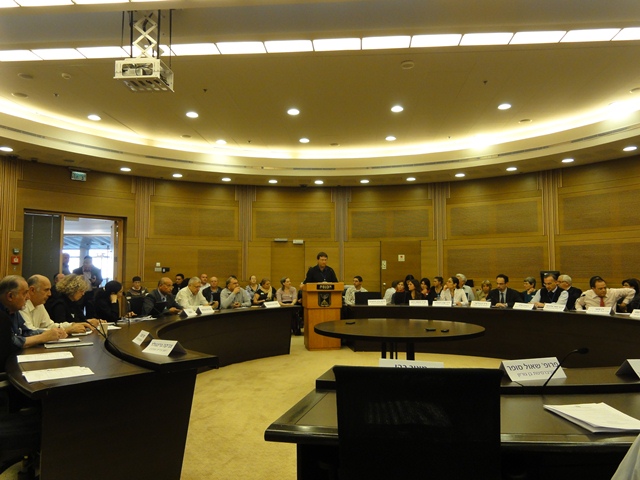Center for Health Policy Research in the Negev comes to the Knesset

Prof. Nadav Davidovitch, Prof. Gabi Ben-Nun and Dr. Keren Dopelt of the Center for Health Policy Research in the Negev recently brought the issue of healthcare gaps between the periphery and the center to the Knesset. Last Tuesday, in cooperation with MK Dr. Rachel Adatto, chairwoman of the Lobby for Public Health and Merage Foundations Manager Naama Dahan, a conference was held at the Knesset focusing on two topics.
The first was a discussion of whether the change in capitation criteria for allocating funds to the four health funds had been successful. The panel featured the CEOs of most of the health funds who agreed that while including the geographic periphery as a criterion was an improvement, the socio-economic periphery should also be added.
Moreover, panelists said, the data used as the basis for the criterion was incomplete such that some of the Negev areas with the highest standard of living like Lehavim, Omer and Meitar, were considered periphery, while others with a much lower standard of living, like Rahat, were not.
The second panel focused on incentives for bringing health professionals to the Negev. It was noted that BGU’s medical school had recruited 90 students this year, an increase from 75 the year before. Ministry of Health Director-General Dr. Roni Gamzu said the ministry was pushing to recruit more nurses to serve in the Negev.
Statistics were also presented showing that medical students who came from the South were much more likely to stay in the South upon completion of their studies. That prompted some to suggest a sort of affirmative action for Southern residents be installed.
The Knesset discussion is part of an ongoing series of conferences which culminated in May 2011 with the “Mitzpe Ramon Conference on equality in healthcare in the Negev.” The Center for Health Policy Research in the Negev is preparing for the next Mitzpe conference and working to create a public health in the Negev lobby to keep the issue high on the public agenda.


